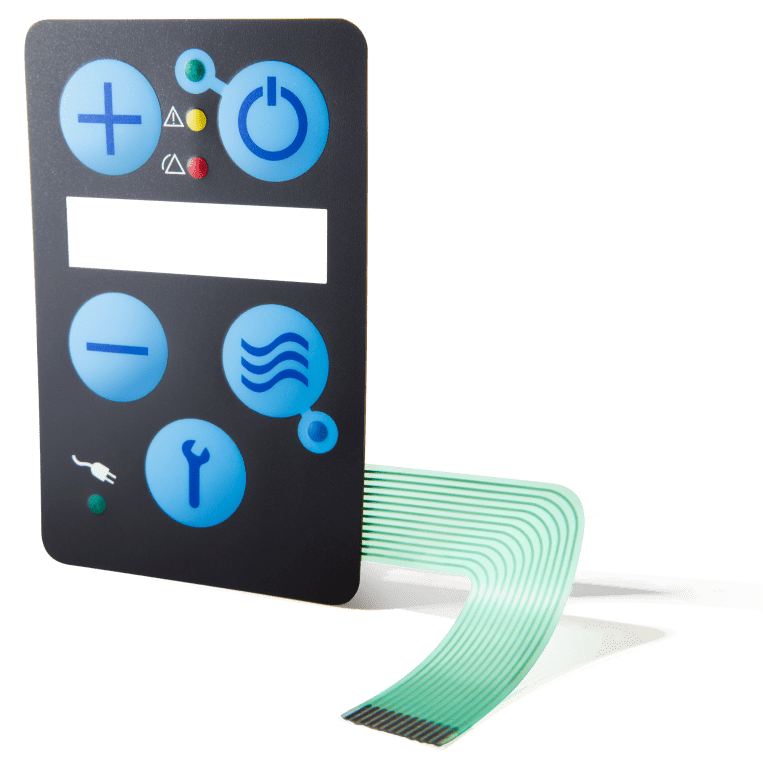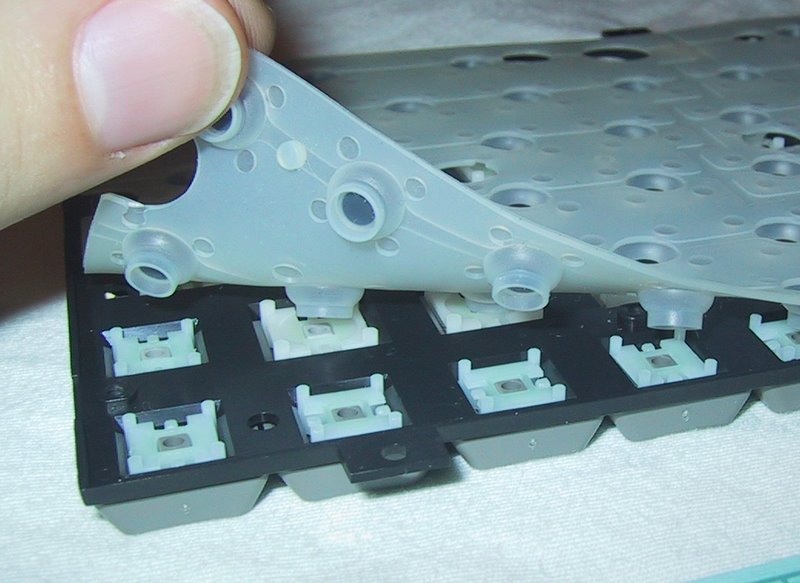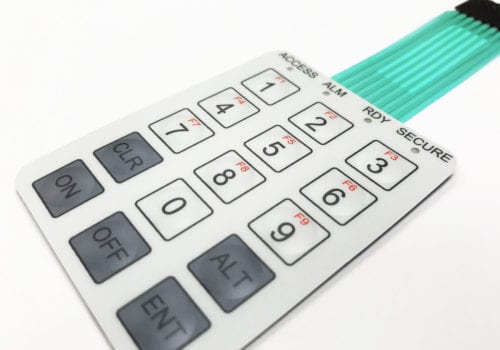A Comprehensive Guide to Membrane Switches for Product Designers
Recognizing the Value of Membrane Switches in User Interfaces
Membrane buttons are integral elements in the style of reliable customer interfaces, promoting not just functionality but additionally boosting aesthetic charm and customer communication. As we explore the various advantages and future patterns connected with Membrane innovation, it becomes clear that these switches are much more than just parts; they stand for a merging of innovation and usefulness.
What Are Membrane Switches?

The spacer layer, which consists of sticky properties, permits the separation of the circuit layer from the overlay, making certain that the button continues to be in a non-activated state until pressed. When stress is put on the overlay, it presses the spacer layer, connecting the gap and completing the circuit in the underlying layer. This layout not only reduces the physical space needed for standard mechanical switches however likewise enhances the durability of the tool, as Membrane buttons are typically immune to dust, moisture, and other ecological aspects.
Commonly discovered in applications ranging from consumer electronics to medical tools, Membrane switches are essential to modern-day technology, providing a easy to use and effective user interface that lines up with modern layout requirements.
Advantages of Membrane Switches
While various switch technologies exist, Membrane Switches deal unique benefits that make them specifically desirable in various applications. Among the key advantages of Membrane switches is their compact layout, which permits space-saving executions in devices where realty is limited. Their thin account not just boosts visual allure however also facilitates light-weight building and construction.
Another substantial advantage is their resistance to environmental factors. Membrane buttons are usually sealed against wetness, dirt, and contaminants, making them optimal for usage in demanding atmospheres, such as medical tools and industrial devices. This toughness extends the life expectancy of the button, decreasing upkeep expenses and boosting integrity.
Furthermore, Membrane switches can be customized to fulfill certain design demands, incorporating special graphics and colors that enhance customer interaction. Their tactile comments options can likewise be customized to give an enjoyable customer experience. Additionally, Membrane buttons are cost-effective, specifically in high-volume applications, as they can be produced efficiently.
Applications in Various Industries

In the consumer electronics market, Membrane buttons prevail in tools such as microwaves, cleaning equipments, and remote controls. Their tactile feedback and visual choices enhance user experience while offering a streamlined, modern-day look. Additionally, vehicle suppliers make use of Membrane buttons in control panel controls and infomercial systems, where area is limited, and customer involvement is vital.
In addition, the commercial field leverages Membrane buttons in control panels for equipment and devices, enabling intuitive procedure in typically rough settings. Their resistance to chemicals and wetness makes certain longevity and integrity in these more applications. In general, the adaptability of Membrane Switches adds significantly to their widespread usage, making them crucial in various technological domains.
Design Factors To Consider for Membrane Buttons

When designing Membrane buttons, several vital factors to consider must be considered to guarantee optimum functionality and customer experience. The selection of products is important; selecting sturdy, premium substratums can boost the switch's longevity and resistance to environmental aspects such as wetness and temperature fluctuations.
Second of all, the style of the visuals overlay must focus on quality and convenience of usage. Symbols and text must be understandable, and the design should facilitate instinctive interaction (membrane switches). Furthermore, tactile responses is important; integrating a tactile dome or various his response other systems can boost the user experience by offering physical confirmation of activation
Another vital element is the button's electrical performance. Developers need to ensure that the conductive traces are correctly made to reduce resistance and avoid signal disturbance. This entails analyzing the needed actuation pressure and ensuring compatibility with the digital parts they will certainly user interface with.

Future Trends in Membrane Innovation
As innovation remains to development, Membrane buttons are poised to evolve dramatically, driven by advancements in materials and manufacturing strategies. One emerging fad is the incorporation of innovative products, such as flexible substrates and conductive inks, which boost durability and reduce the general weight of Membrane buttons. These products not only boost the tactile action but additionally permit the style of switches that can stand up to harsher environmental problems.
Moreover, the integration of touch-sensitive modern technologies is transforming standard Membrane Switches into more interactive individual interfaces. Capacitive touch sensing units installed within Membrane switch panels can supply an extra receptive and intuitive individual experience, lining up with the expanding need for sleek, modern styles in consumer electronic devices.
Additionally, developments in printing methods, such as digital and 3D printing, make it possible for rapid prototyping and customization of Membrane buttons. This versatility enables makers to react quicker to market demands and consumer preferences.
Finally, sustainability is becoming a significant focus, with makers checking out green materials and processes. As these fads unravel, the future of Membrane technology promises boosted performance, aesthetic appeal, and environmental responsibility, strengthening their function in advanced customer interfaces throughout various markets.
Final Thought
In verdict, Membrane Switches represent an essential element in the design of individual interfaces, incorporating functionality with aesthetic flexibility. As improvements in innovation continue, the advancement of Membrane buttons is anticipated to more improve user interfaces, driving innovation and improving use in an increasingly complicated technical landscape.
Membrane buttons are integral parts in the design of efficient user interfaces, helping with not only capability yet also boosting aesthetic appeal and individual interaction.Membrane Switches serve as a vital element in various user interfaces, promoting a smooth communication between users and digital devices.While countless switch innovations exist, you could try this out Membrane Switches offer distinctive benefits that make them especially desirable in numerous applications.Moreover, Membrane buttons can be customized to satisfy certain design demands, incorporating distinct graphics and shades that enhance customer communication.In final thought, Membrane Switches represent a vital component in the style of individual interfaces, incorporating performance with aesthetic versatility.